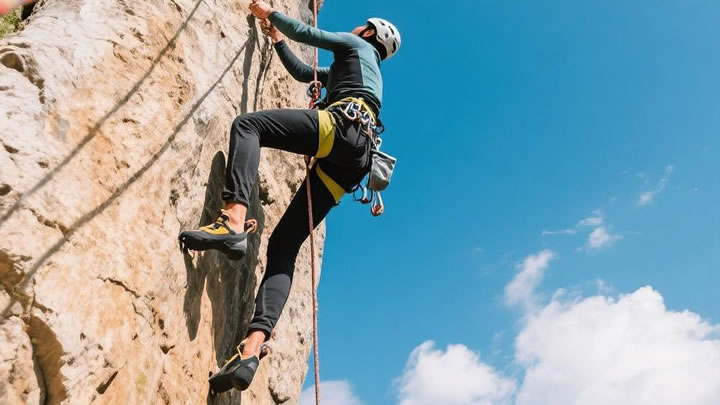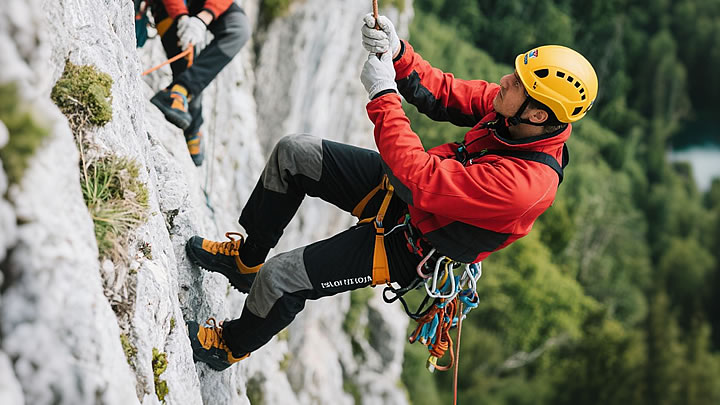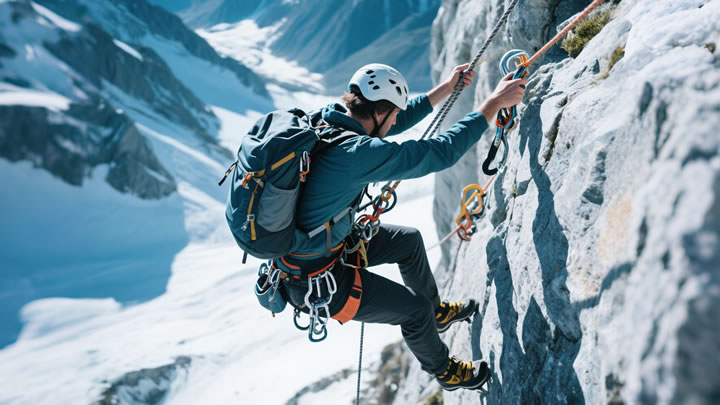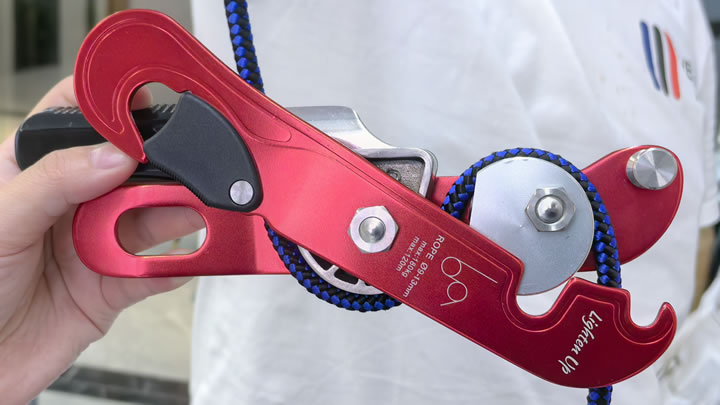Rescue Techniques Using Climbing Descent STOP: Professional Protocols for Critical Situations
The Petzl STOP transcends basic rappelling to become a powerful rescue tool when mastered. Its unique auto-locking cam and lowering capabilities enable complex hauling, lowering, and casualty management systems far beyond standard devices. This guide details professional rescue applications, integrating IFMGA best practices and mountain rescue case studies.
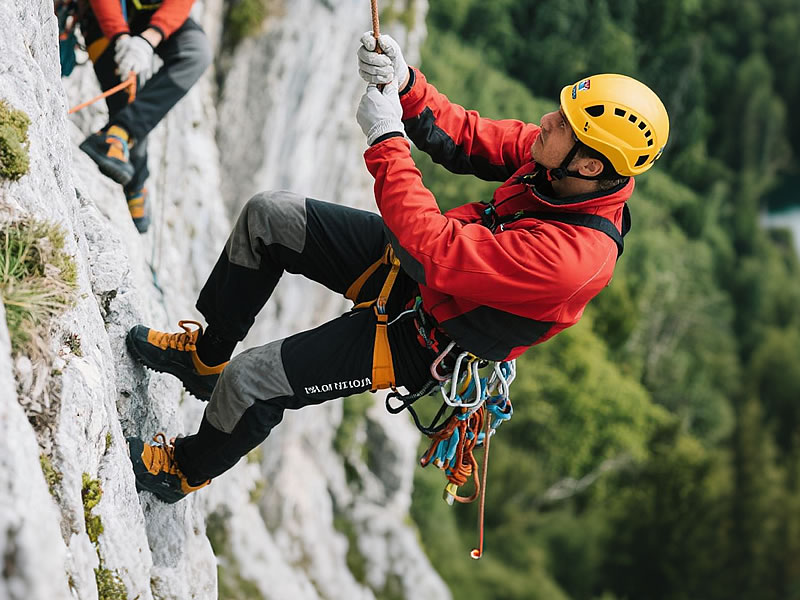
Why the STOP Excels in Rescue Scenarios
Key Advantages Over Other Devices:
- Hands-Free Locking: The auto-lock provides crucial security during system adjustments
- Precise Lowering Control: Handle modulation allows millimeter-per-second descent control
- High Friction Capacity: Handles heavy loads (tested to 300kg in rescue configurations)
- Rope Compatibility: Works with single, double, and twin ropes for system flexibility
Proven Rescue Applications:
- Injured climber lowering systems
- Raising systems with mechanical advantage
- Stranded climber evacuations
- Technical rope rescue transitions
Critical Rescue Technique #1: Injured Climber Lowering System
Scenario: Conscious injured climber requiring controlled descent
Setup Protocol:
- Anchor the STOP directly to bombproof anchor (not your harness)
- Thread the rope through STOP's central slot (from climber side)
- Attach to Patient:Use a rescue-specific harness (e.g., Petzl Jaguar)Implement backup knots (Prusik below STOP)Attach guide line for directional control
Lowering Procedure:
- Initiate Descent: Pull handle UP to disengage cam
- Modulate Speed: Lower handle DOWN gradually - angle controls descent rate
- Emergency Stop: Fully release handle for instant lock
- Communication: Use clear commands via radio/visual signals
Safety Systems:
- Tandem Prusiks: Below STOP and on brake strand
- Edge Protection: Roller pads or carpet at lip
- Load Monitoring: Watch for anchor movement/rope abrasion
Rescue Technique #2: 3:1 Hauling System Integration
Scenario: Raising an injured climber or heavy load
System Configuration:
STOP as Progress Capture Device (PCD):
1. Set up 3:1 haul system with pulley
2. Install STOP between haul team and load
3. Thread rope through STOP (load side → haul team)
4. Set cam to auto-lock position
Operation:
- Hauling Phase: Team pulls - STOP cam allows rope passage
- Rest Phase: STOP automatically locks, holding progress
- Resetting: Use handle to momentarily release cam while taking slack
Advantages Over Traditional PCDs:
- Faster resetting than Prusik-based systems
- Higher weight capacity (vs. mechanical ascenders)
- Works with muddy/wet ropes where Prusiks fail
Technical Specifications for Rescue Loading
| Parameter | Standard Use | Rescue Loading | Safety Factor |
|---|---|---|---|
| Maximum Load | 120kg | 250kg | 2.1:1 |
| Lowering Speed Range | 0-2 m/s | 0-0.3 m/s | N/A |
| Continuous Use Time | 5 minutes | 30 minutes | Heat monitoring |
| Rope Compatibility | 8.7-11mm | 9-11mm | Reduced margin |
*Data: Petzl Rescue Technical Notice RTN-07 (2023)*
Rescue Technique #3: Tandem Rappel Evacuation
Scenario: Evacuating unconscious or non-verbal climber
System Setup:
- Rescuer Harness: Connect to patient via chest-to-chest harness
- STOP Configuration: Thread both ropes through central slot
- Backup Systems:Autoblock on rescuer's leg loopTop-rope belay from secondary anchor
- Descent Control:Rescuer manages STOP handle with dominant handSupport patient with other hand/body position
Critical Considerations:
- Practice with weighted dummy first
- Use larger diameter ropes (10.5-11mm) for increased friction
- Have secondary brake device ready for transfer
Equipment Synergies for STOP Rescue Systems
Essential Companion Gear:
- Pulleys: Petzl PODIUM (rescue-rated pulley)
- Prusiks: 6-7mm accessory cord (double fisherman's)
- Anchor Materials: Dyneema slings (22kN strength)
- Communication: Two-way radios with headsets
- Edge Protection: Petzl PROTEC bag or equivalent
Advanced Additions:
- Tag Line: 6mm static rope for directional control
- Heat Sensors: Infrared thermometer for STOP temperature monitoring
- Load Cells: Digital tension readouts for system monitoring
Real-World Case Study: Chamonix North Face Rescue
Situation: Injured climber with compound fracture at 3,800m
STOP Deployment:
- Initial lowering via STOP with 4:1 pulley system
- Mid-descent transfer to helicopter long-line
- STOP used as secondary backup during transfer
Key Lessons:
- Practice transitions between systems
- Carry multiple STOPs for complex rescues
- Pre-rig systems during weather windows
Training Protocol for Rescue Proficiency
Skill Progression:
- Master basic STOP operation (50+ normal rappels)
- Practice weighted lowers (100kg+ bags)
- Simulate communication failures
- Train in low-light conditions
- Conduct scenario-based exercises
Certification Requirements:
- IFMGA Mountain Guide certification
- Or: IRATA/SPRAT technical rescue certification
- Minimum 40 hours STOP-specific rescue training
Safety Alerts and Limitations
Known Rescue Risks:
- Heat buildup during long lowers (monitor with IR thermometer)
- Rope damage from constant cam contact
- Handle fatigue during extended operations
Absolute Contraindications:
- Never use with ropes below 9mm for rescue
- Avoid icy ropes without testing lock function first
- Don't use without backup systems in place
The Future of STOP Rescue Technology
2025 Innovations:
- Integrated temperature sensors with audible alerts
- Quick-change cam assemblies for different rope sizes
- RFID tracking for maintenance and certification
Current Best Practice:
Always carry two STOPs for complex rescues - one for main system, one for backup. Practice monthly under realistic conditions and document all training in rescue logs.
Conclusion
The Petzl STOP transforms from a descender to a sophisticated rescue tool when properly configured. Its unique capabilities justify the training investment for professional guides and rescue teams. However, its complexity demands rigorous practice - mistakes in rescue situations have magnified consequences. Implement these techniques gradually, always maintaining redundant safety systems, and remember: no device replaces solid judgment and comprehensive training.

